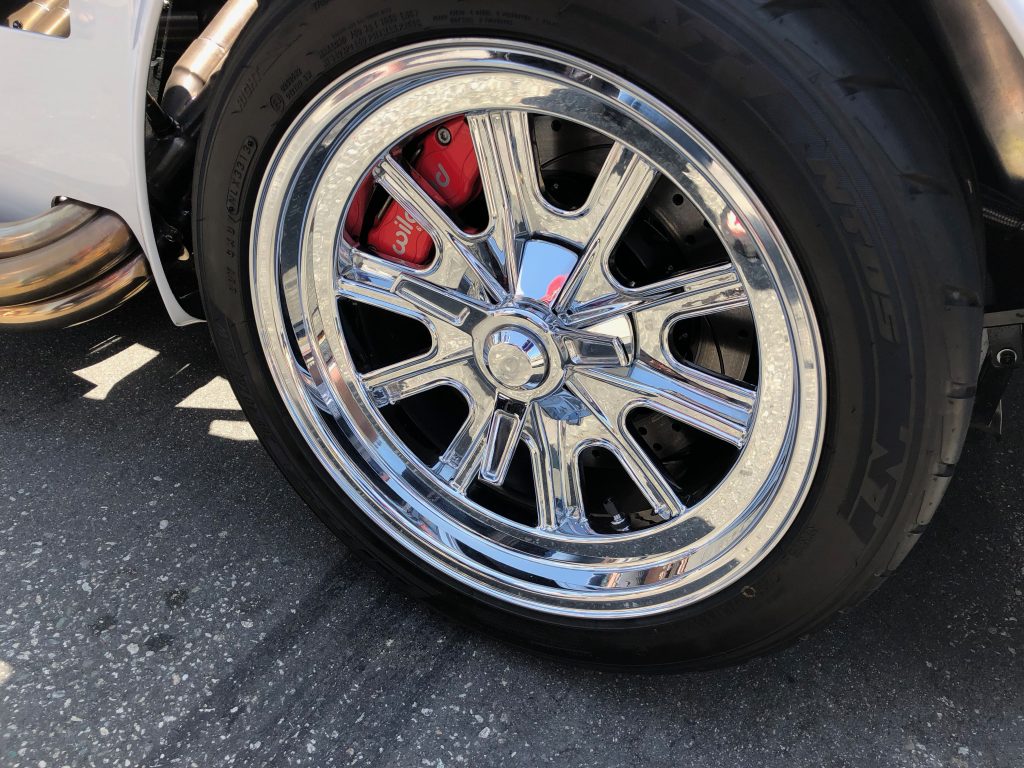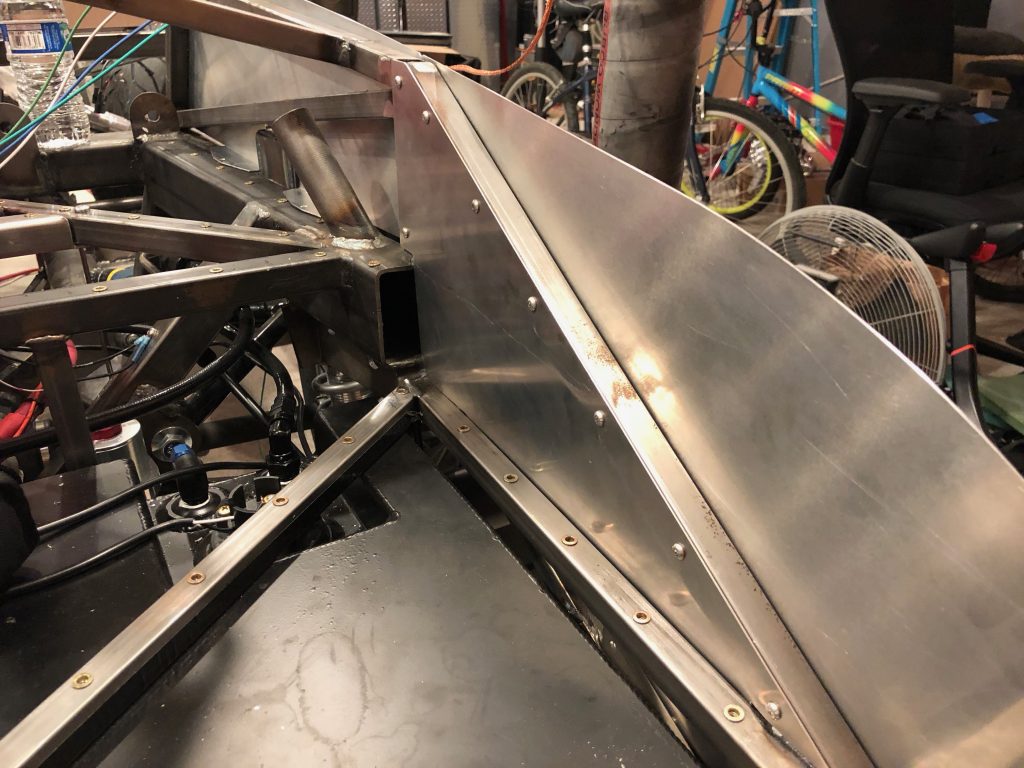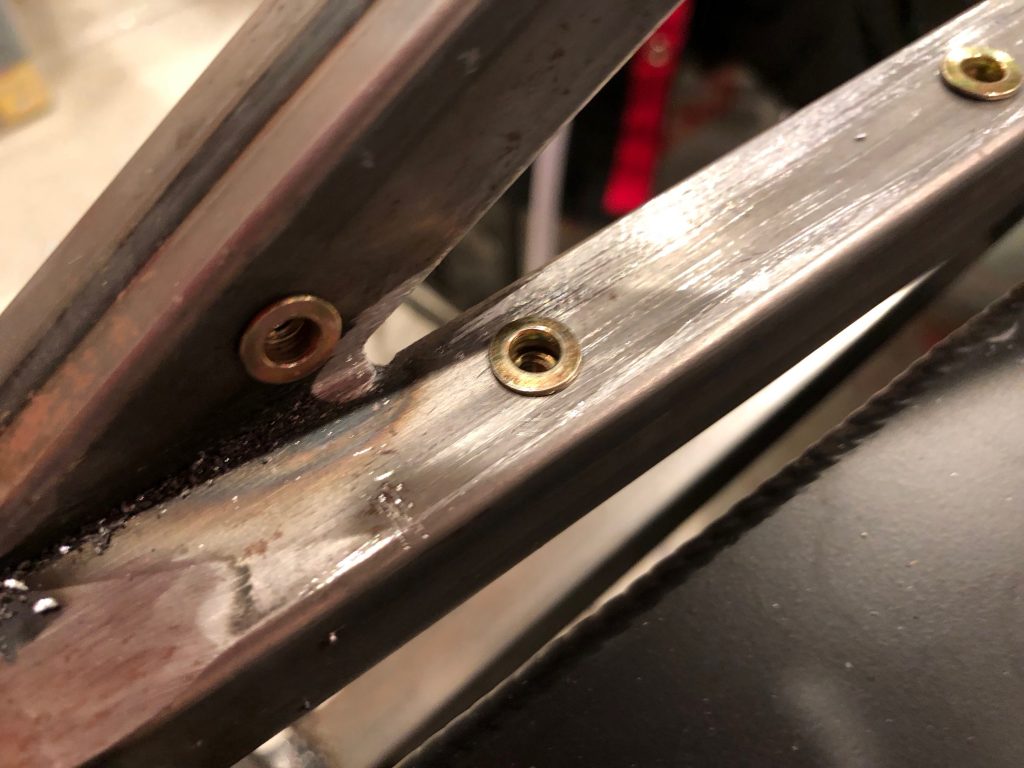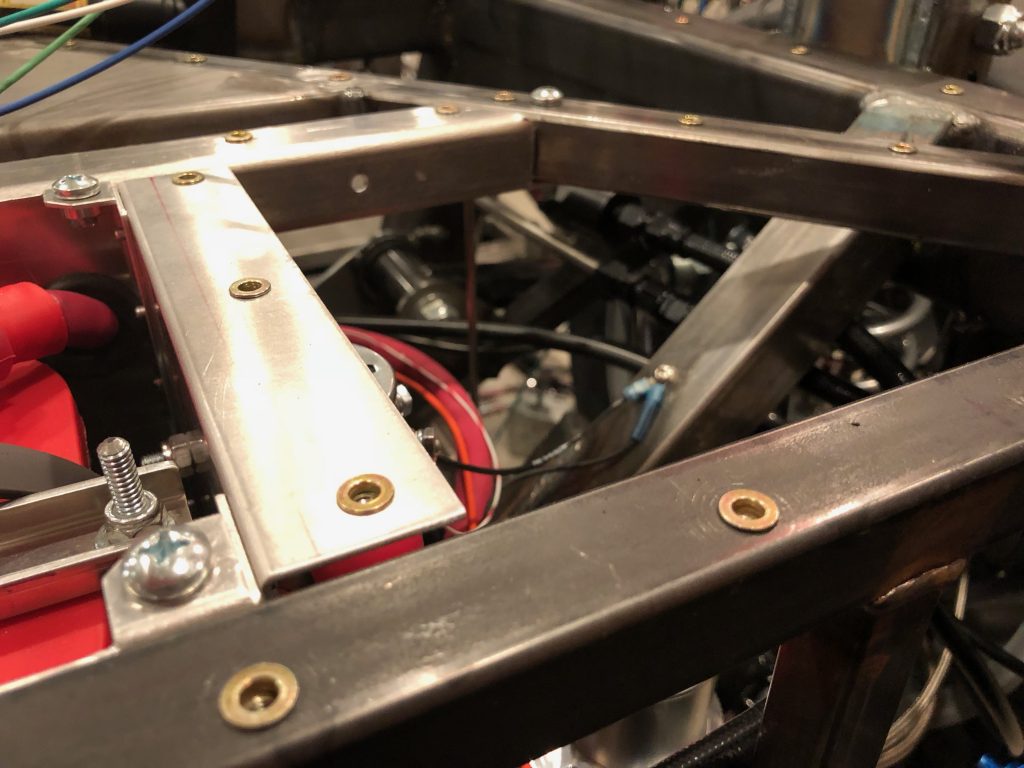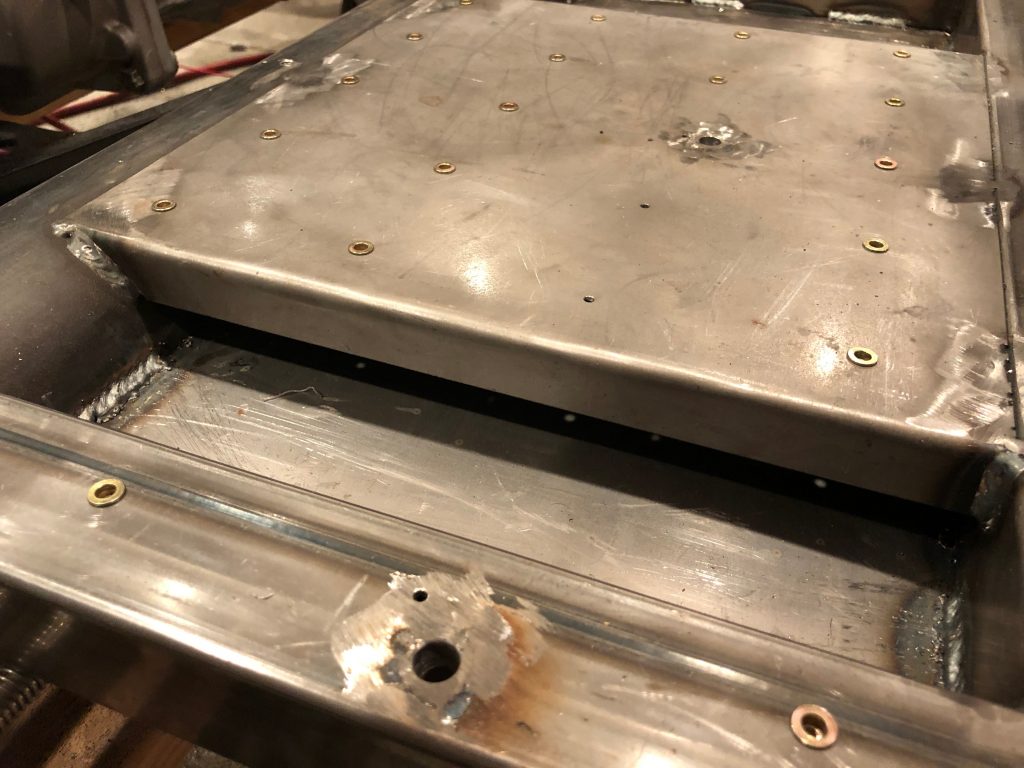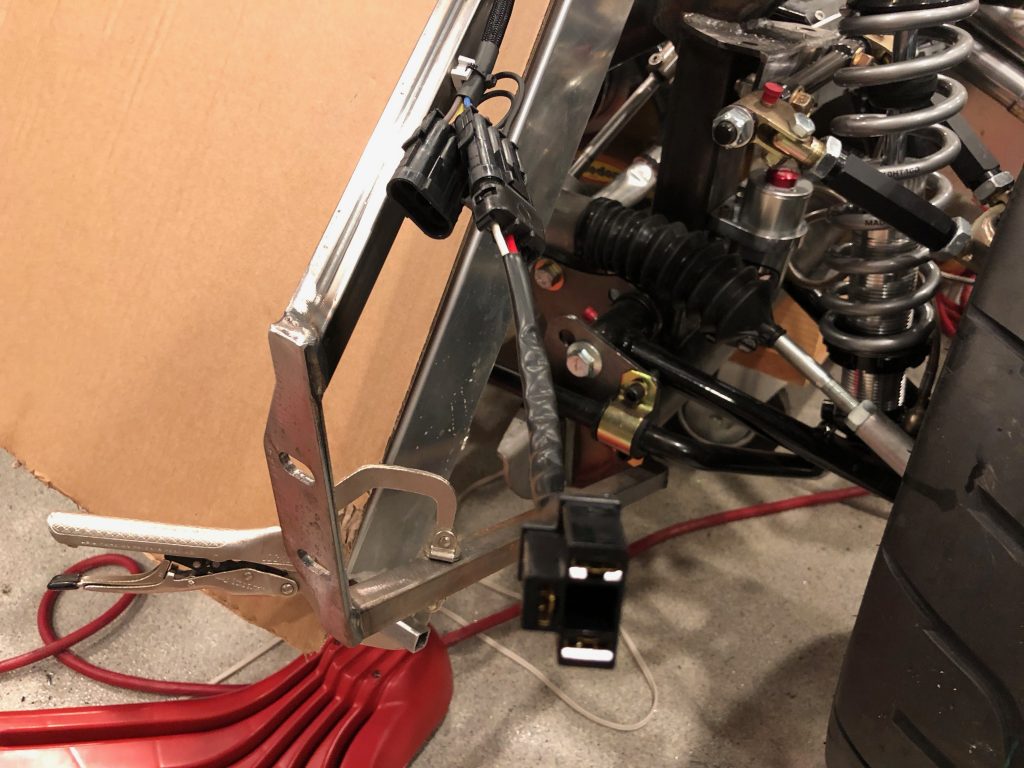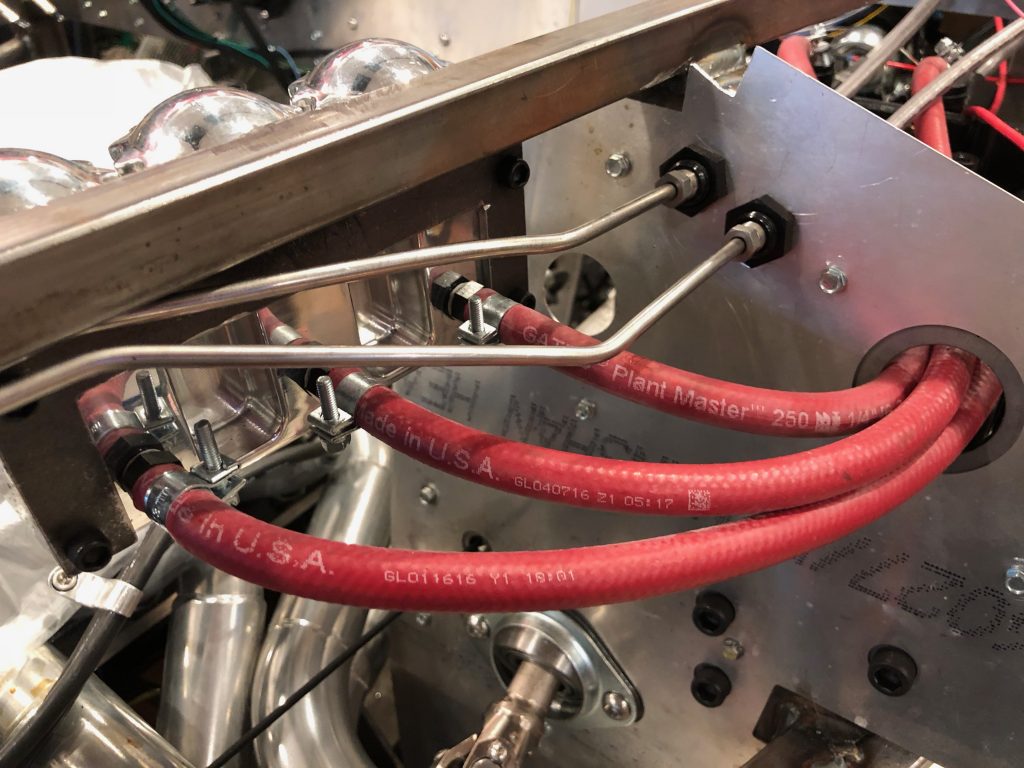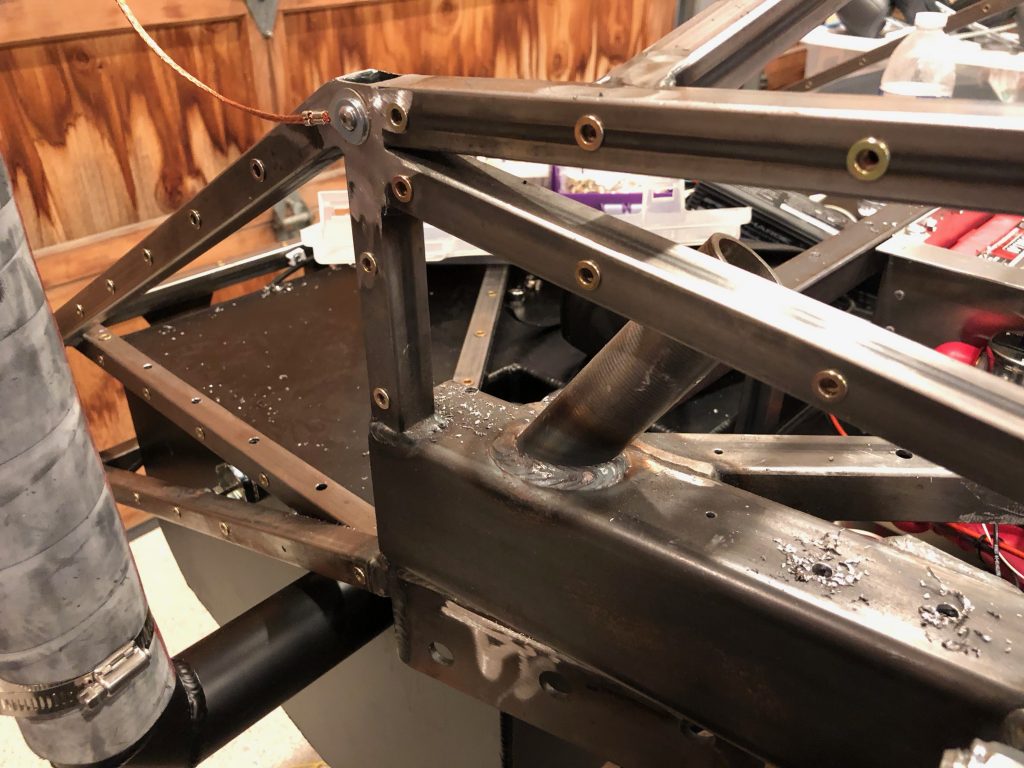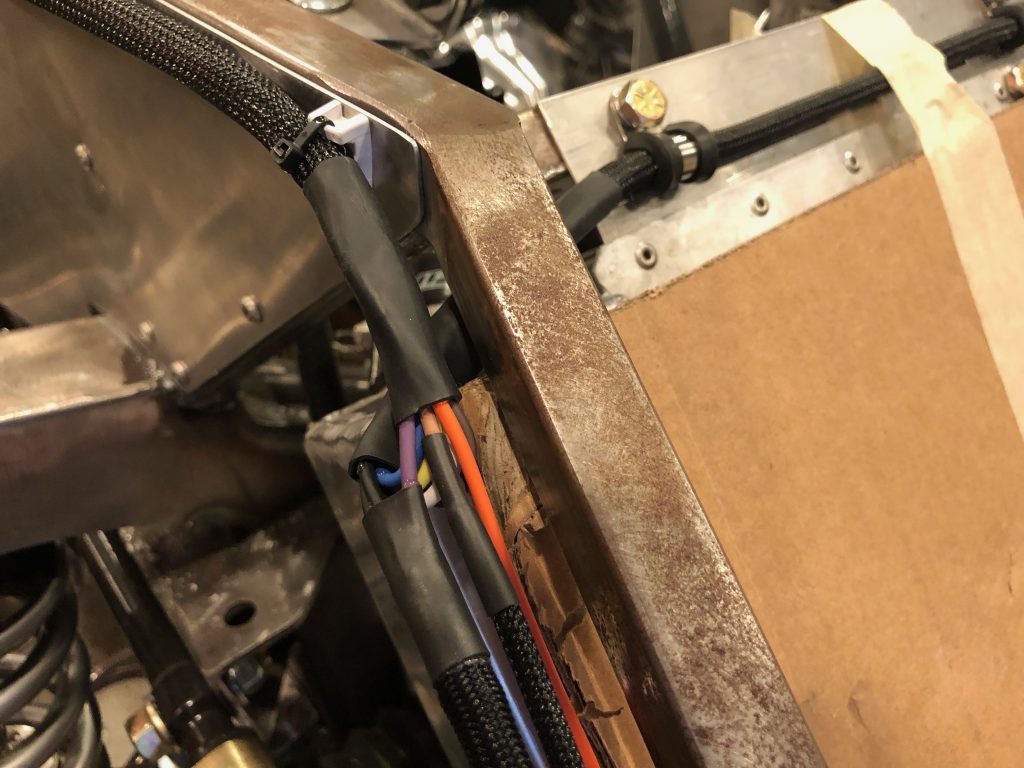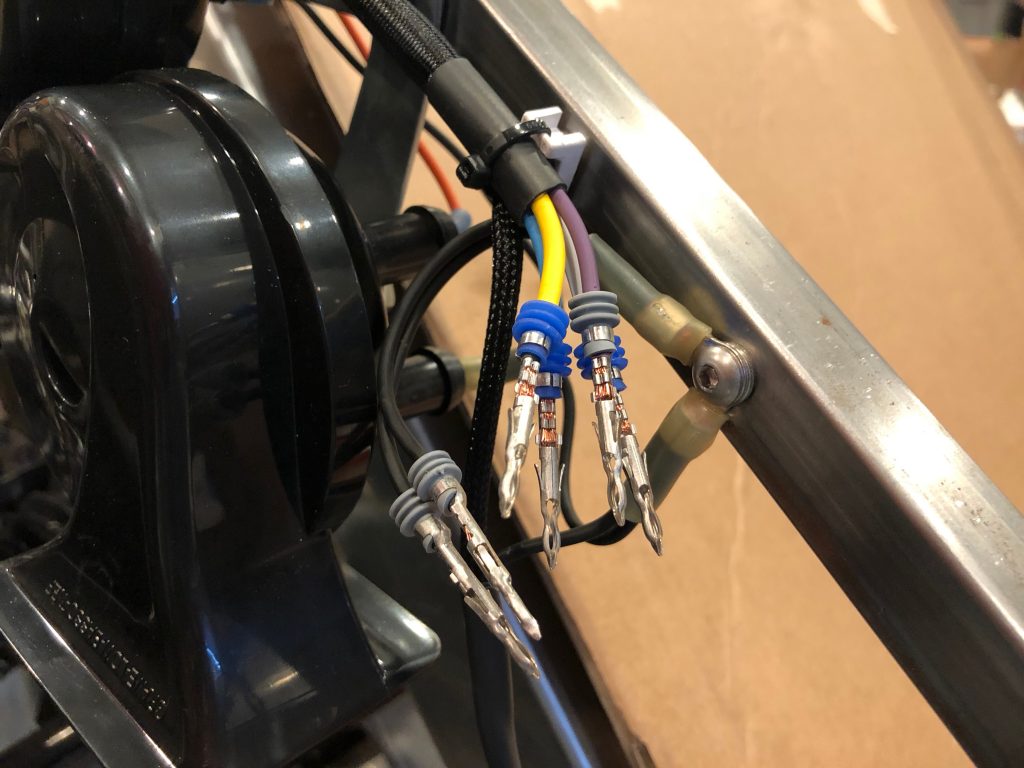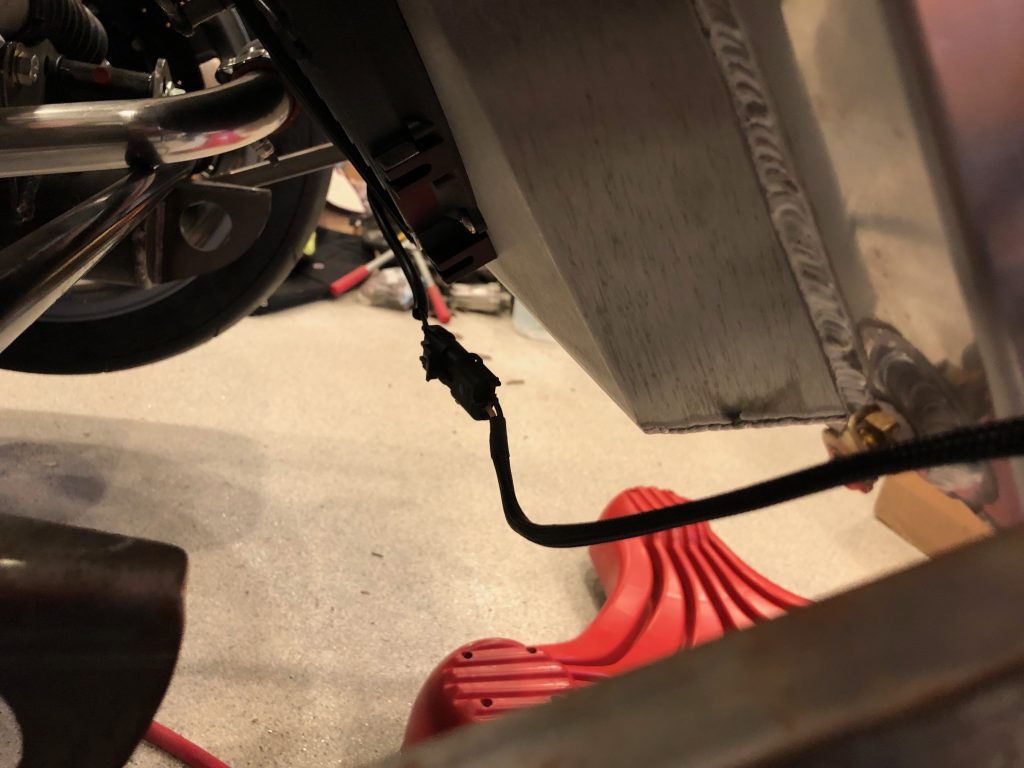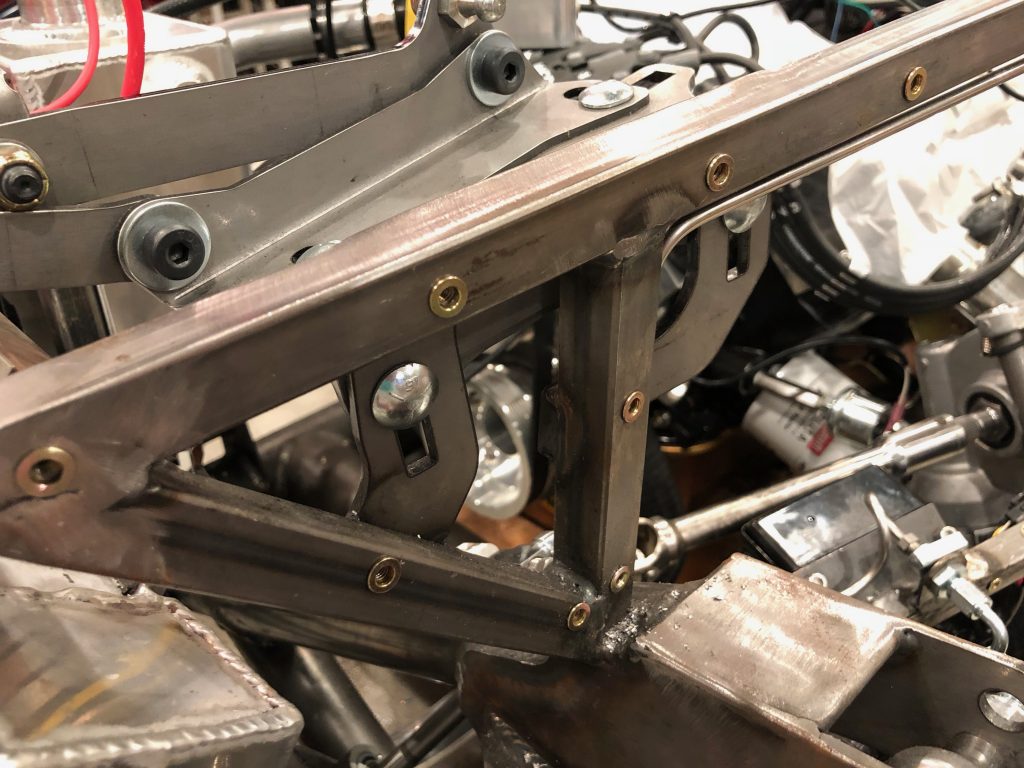I flew the family down in our Bonanza to the 11th annual Huntington Beach Cruise-In. There were a ton of beautiful cars there and we spent quite a bit of time talking to many of the owners. One of the more impressive Cobras at the show was Saul Sotelo’s Mk4. It has a number of custom features which we really liked. It has the Lucas headlights which we will be using. It also has billet aluminum quick jacks and some custom aero work.
Jenn really likes the look of the chromed wheels, so I think there’s a good chance we’ll be doing that to our wheels. These are 17″ wheels like ours.
He also used Breeze Automotive’s 1.75″ rollbars which we both like much better than Factory Five’s current 1.5″ or early model 2″ tubes. Unfortunately, Breeze doesn’t have these in stock right now due to supplier issues. Hopefully, they’ll get those resolved soon. He also had some slick headrests that mounted to the rollbars. We like the idea of having headrests but will probably need something adjustable since our seats are adjustable.


